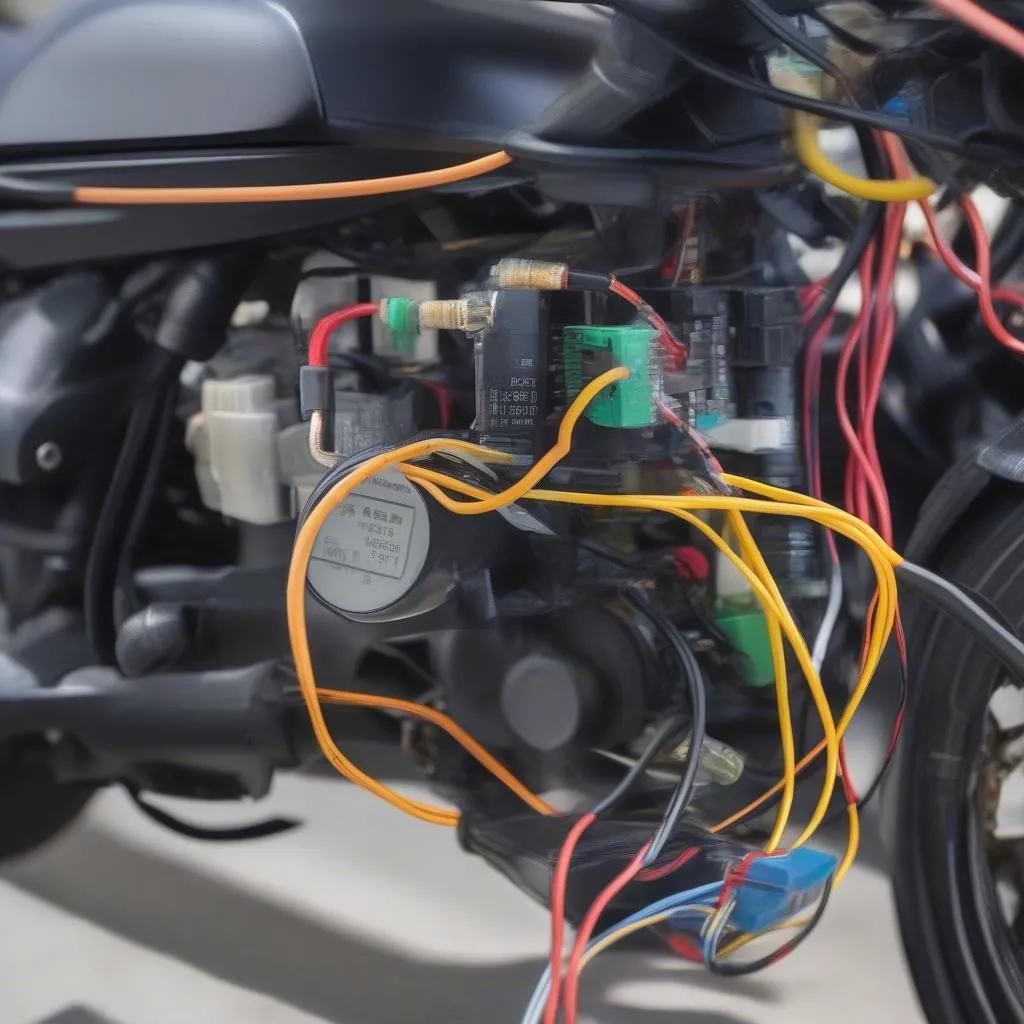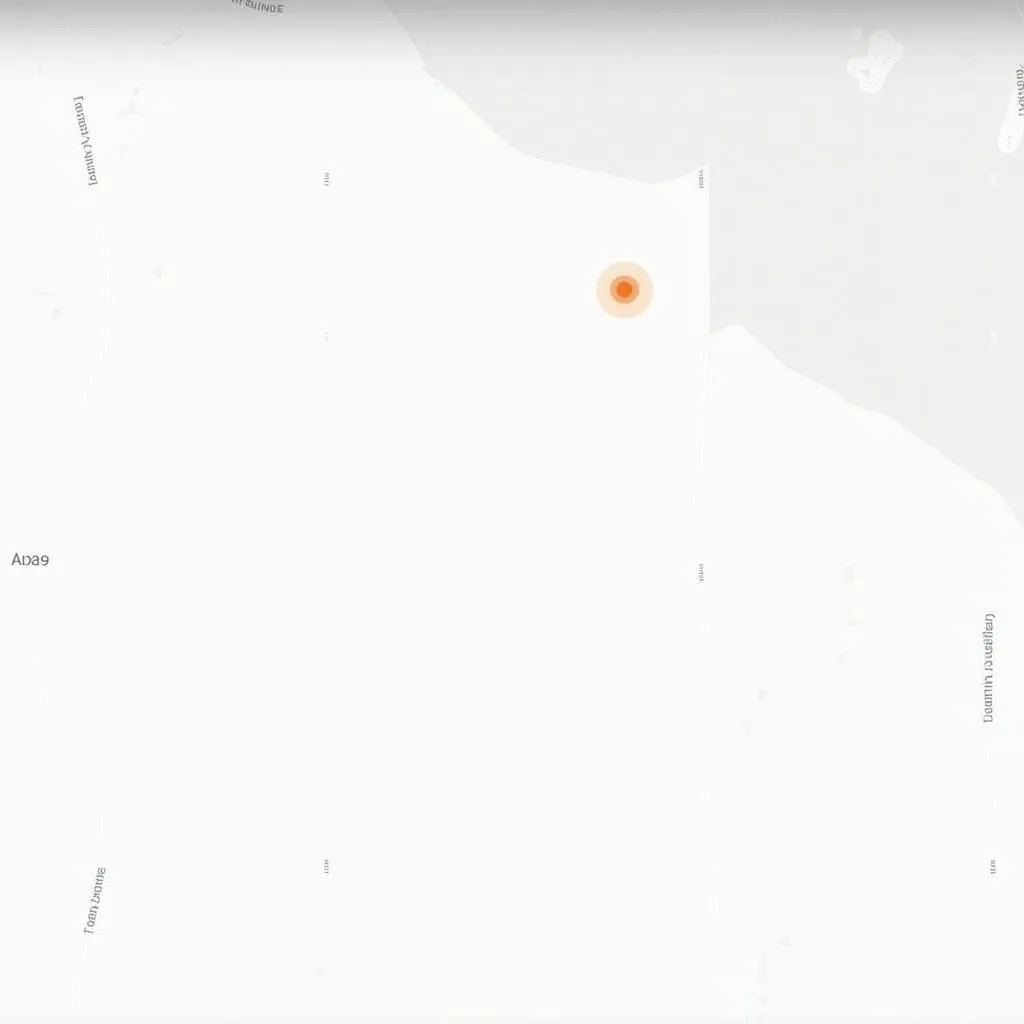The Volvo 240, a classic known for its durability and safety, can occasionally throw you a curveball. One such curveball is the dreaded brake warning light illuminating on your dashboard. While this might send a chill down your spine, it’s important to remember that a glowing brake warning light doesn’t necessarily spell disaster. It’s your car’s way of saying, “Hey, let’s take a look at the brakes!”
Understanding Your Volvo 240’s Brake System
Before we dive into the potential culprits behind your illuminated brake warning light, it’s beneficial to have a basic understanding of how your Volvo 240’s brake system works. It’s a beautifully engineered system that relies on hydraulic pressure to bring your vehicle to a halt. When you press the brake pedal, you’re essentially activating a piston in the master cylinder, pushing brake fluid through a network of lines and hoses to the calipers at each wheel. This pressure forces the brake pads to clamp down on the rotors, generating friction that slows and stops your car.
Common Reasons Your Brake Warning Light is On
Now, let’s address the elephant in the room – why is your brake warning light on? Several factors could be at play, ranging from a simple fix to a more complex issue.
1. Low Brake Fluid Level
This is perhaps the most common culprit and the easiest to address. Your Volvo 240, like any car, needs a sufficient amount of brake fluid to function properly. If the fluid level drops below a certain point, the warning light will illuminate.
What to do:
- Check the brake fluid level. Locate the brake fluid reservoir under the hood (refer to your owner’s manual if unsure).
- Top off if needed. If the fluid level is low, carefully add the correct type of brake fluid recommended for your Volvo 240 until it reaches the “MAX” line.
Important: Never drive with a low brake fluid level, as this could lead to brake failure. If you find yourself frequently adding brake fluid, you likely have a leak that requires immediate attention from a qualified mechanic.
2. Worn Brake Pads
Brake pads are your first line of defense against the relentless force of friction. Over time, they naturally wear down, and when they reach a certain thickness, a small metal tab on the brake pad will make contact with the rotor, triggering the warning light.
What to do: If you suspect worn brake pads, it’s crucial to have them inspected by a mechanic as soon as possible. Driving with worn brake pads not only compromises your safety but can also damage the rotors, leading to more expensive repairs down the line.
3. Brake System Leak
A leak in your brake system, whether it’s a leaking brake line, hose, or caliper, can result in a loss of hydraulic pressure, compromising your ability to stop effectively.
What to do: Look for signs of a leak, such as brake fluid puddles under your car or a consistently dropping brake fluid level. If you suspect a leak, do not attempt to drive the vehicle. Contact a qualified mechanic immediately to diagnose and repair the leak.
4. Faulty Brake Caliper
The brake caliper houses the piston that pushes the brake pads against the rotors. A sticking or seized caliper can cause uneven brake pad wear, dragging brakes, and even lead to the brake warning light illuminating.
What to do: A faulty brake caliper requires professional attention. A mechanic will be able to inspect the caliper, determine the cause of the issue, and perform the necessary repairs or replacement.
5. ABS Issue
If your Volvo 240 is equipped with an Anti-lock Braking System (ABS), a problem with the ABS module or sensors can also trigger the brake warning light.
What to do: Diagnosing ABS issues typically requires specialized diagnostic equipment. If you suspect an issue with your ABS system, it’s best to consult a qualified mechanic or a Volvo specialist.
“My Brake Warning Light Flashes Intermittently. What does that mean?”
A flashing brake warning light often indicates a more serious issue, potentially related to the hydraulic system or ABS. It’s crucial not to ignore a flashing brake warning light and to have your vehicle inspected by a professional immediately.
Keeping Your Volvo 240’s Brakes in Top Shape
Prevention is always better than cure. Here are a few tips to keep your Volvo 240’s braking system in optimal condition:
- Regular Brake Inspections: Schedule brake inspections with a trusted mechanic at least once a year or as recommended in your owner’s manual.
- Timely Brake Pad Replacement: Don’t wait for your brake pads to wear down completely. Replace them as soon as they reach the recommended thickness.
- Quality Brake Fluid: Use the correct type and quality of brake fluid as specified by Volvo.
- Mindful Driving Habits: Avoid harsh braking whenever possible. Anticipate stops and coast to a gradual halt.
A Final Word
Your Volvo 240’s brake warning light is a crucial safety feature, alerting you to potential issues before they escalate. While it might seem tempting to ignore or dismiss a glowing warning light, especially if your brakes seem to be working fine, it’s essential to remember that addressing brake issues promptly can prevent more costly repairs and, most importantly, ensure your safety on the road.


